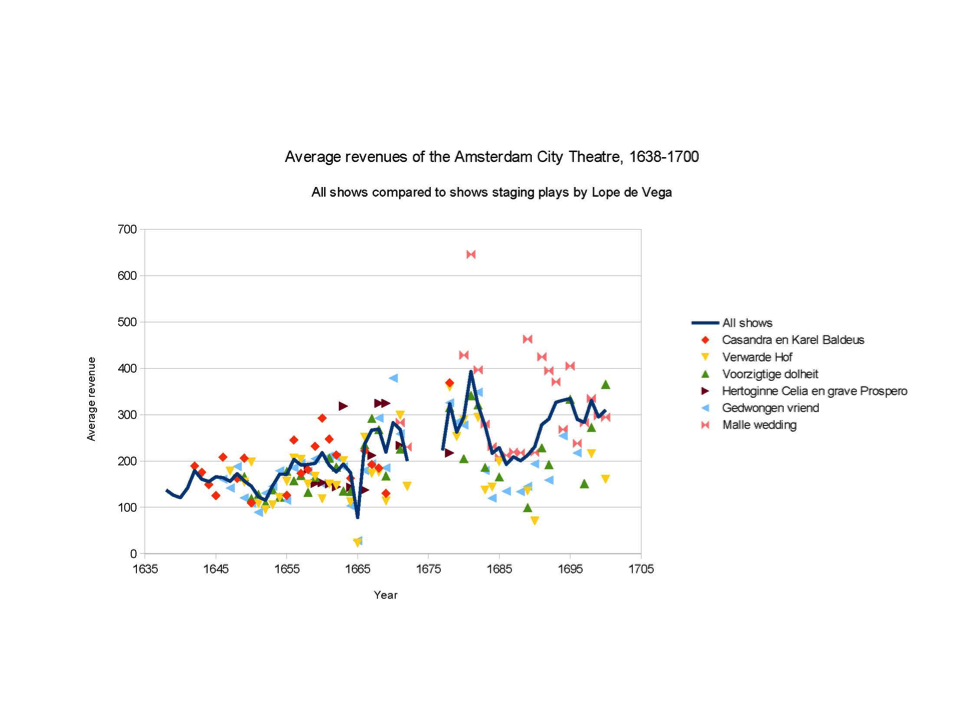Eighty years of war against the arch enemy Spain eventually brought freedom and autonomy for the Netherlands in 1648. Peace between the nations garanteed a new era of traffic, trade and exchange. This was the moment when another Spanish Armada went out to conquer Europe: the fabulous and most popular theatre pieces from Spain’s famous playwrights as Calderon and Lope de Vega. Their comedias invaded Europe with an innovative and most attractive type of theater productions.
In Amsterdam, the public theatre or Schouwburg at the Keizersgracht 434, had opened its doors just at that time, and welcomed spectators on Mondays and Thursdays for the latest European theatre vogues. Dutch people loved and never stopped loving Spanish plays ever since the first Amsterdam adaptations were staged. In productions for the Schouwburg, the Spanish Phoenix Lope de Vega quickly surpassed local playwrights, and even Amsterdam’s greatest theatre hero at the time, Joost van den Vondel, was only second in popularity and revenues.
Commodities in a commercial creative city, the Vega repertoire plays in the Schouwburg were also exported from Amsterdam. Viral in the economic network, these Spanish cultural goods travelled aboard Dutch merchant vessels further North to be performed in Kopenhagen, throughout Germany, in Stockholm and as far as the Baltic area. And so, by capturing the people’s taste in Amsterdam, Spain realized a peaceful cultural conquest of Europe.
That, in short, was UvA CREATE’s contribution to the Lope de Vega conference held in Barcelona last December (http://prolope.uab.cat). Research results, presented there by dr. Frans R.E. Blom, were mainly based on the new CREATE online datasystem ONSTAGE (http://www.vondel.humanities.uva.nl/onstage/). ‘A fine and convincing example’ as one of the congress scholars put it, ‘of how digital humanities and quantifications of cultural phenomena both benefits from and contributes to a long and respectable research tradition with new and innovative perspectives and elegant data visualisations.’

